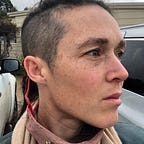Flower petal bead making, human history and the Mother Goddess
Bead making as a form of bodily adornment is one of the oldest art forms known to mankind. Beads made from shell, bone and teeth have been found in the fossil record as far back as the Pleistocene. This perforated wolf’s incisor was found in Repolust Cave in Styria, Austria, along with a piece of flaked bone and have been dated to the late Paleolithic era. Beads made from ostrich egg shells have been found in Blombos Cave, on the South African coast near Capetown that date to more than 75,000 years old.
Bead making practices have evolved over the course of human history. In the lands now known as modern Ukraine, beads were made from clay, stone, amber and carnelian as far back as the 7th century BC. Venice is famous for its glass beads, a tradition originating in Egypt and Mesopotamia over 3500 years ago. And there are many beading practices still in use in the Americas, Australia, Europe and Africa.
As well as being ornaments used for bodily adornment, beads serve other important functions around the world. They have been used as currency, in meditation, prayer and ritual and as social markers to denote status and power. In the Ukraine women traditionally wore multiple strings of beads, called namysto, around their necks denoting status and occasion. To go out without beads of some kind was akin to going out naked. In the middle ages, beads were used to decorate clothing — the more ornate the beading, the higher ranking the wearer. Glass beads were taken to the Americas by the french and quickly adopted by the indigenous people who already had a practice of adorning clothing and headpieces with porcupine quills and other traditional ‘beads’. They used these beads to create traditional designs signifying different ceremonial and family connections.
The practice of making beads from flowers stems back to the original rosaries, which were garlands of flowers made to honour Mary, the Christian mother of God-become-man. Flower garlands evolved into strings of beads linked to specific prayers. These days rosaries are made from many different materials including glass, plastic, metal, wood, bone, and so on, but the original essence of the flower garlands are best captured in those made from flowers.
There are different ways of making flower petal beads. Those who make rosaries from flowers in the Catholic tradition use dried flowers and clay to make beads of a uniform shape and size for a boutique commercial market. However, there is a more invisible household tradition or practice of making beads from flower petals only. Flowers can be fresh or dried and go through a process of heating, softening, maceration, and then cooking down to a paste before being rolled, pierced and left to dry. Beads made in this way are more susceptible to breakage, rot or mould and so the practice of making them and using them in prayer and ritual has not been commercialised.
There is an old tradition of honouring the virgin Mary, or Mary the mother of God, as the great Mother. She stands alongside Isis, Durga-Ma, and other mother goddesses around the world. In Mexico, a young man named Juan Diego had a vision of a young woman, ‘Our Lady of Guadalupe’ , on the Hill of Tepeyac, which is the mountain on which the Aztec’s made sacrifices to Tonantzin, the divine mother and serpent woman. In other places around the world Mary has become the form of the great mother that is practical and safe to worship in place of more ancient deities of those places.
There are powerful threads of ancient culture and mother goddess worship running through the practice of making flower petal beads. There is knowledge wisdom and power transmitted through the practice of cooking, macerating, rolling, piercing, and threading and through the finished product itself. When we work with the hands our bodies come to know things on multiple levels at once. We learn the physical skills, as well as the wisdom that is carried within those practices from across the ages. The act of making flower petal beads is an act of remembering and re-learning the many ways of giving honour and devotion to that which gives us life and of anchoring and extending the nourishment and nurture of that process into our homes, our families, our work and our world.
Beads in the fossil record
https://www.ox.ac.uk/news/2013-09-12-dating-beads-sets-new-timeline-early-humans
https://www.researchgate.net/publication/276499524_The_Significance_of_the_Earliest_Beads
https://www.jstor.org/stable/40465556
Evolution of bead making
Functions of beads
https://euromaidanpress.com/2016/04/25/ukrainian-neck-ornaments-history-and-symbols/
https://naafa.org/community-voices/native-am-beadwork
https://www.powwows.com/native-american-beadwork-a-rich-history-of-cultural-techniques/
Flower petal bead making
Astar’s Place’s instructional video, whose mother taught her to make beads like this https://www.youtube.com/watch?v=ET39DCTSMFc
The rosary and the mother Goddess
https://www.ewtn.com/catholicism/library/history-of-the-rosary-1142
https://www.mondocattolico.com/blogs/news/the-long-tradition-of-the-rose-petal-rosary
The way of the rose, book by Perdita Finn and Clark Strand
https://www.theyucatantimes.com/2021/12/tonantzin-the-deity-behind-our-lady-of-guadalupe/
Craftwork and wisdom
Containers of power: Women with clever hands, by Louise Hammy
